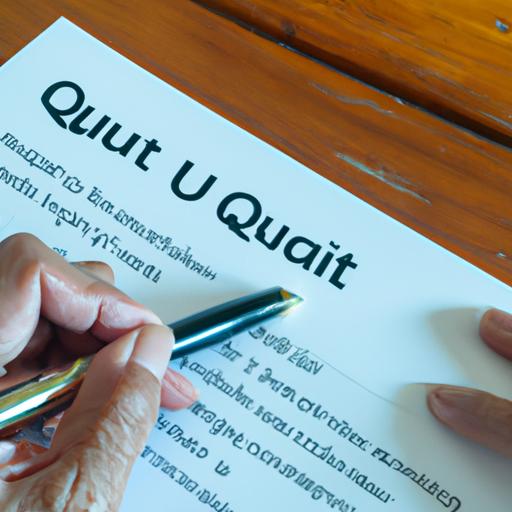Introduction
When it comes to selling a home, there are various methods to transfer ownership, with one lesser-known but effective option being a quit claim deed. But what exactly is a quit claim deed, and how does it impact the home selling process? Let’s delve into the specifics to understand how this unique deed can simplify the transfer of property ownership seamlessly.
A quit claim deed is a legal document used to transfer a property owner’s interest in real estate to another party. Unlike a warranty deed, which guarantees the title of the property, a quit claim deed offers no such assurances. This deed essentially allows the current owner to “quit” or release their claim on the property, passing on whatever interest they may have to the recipient. So, how does this factor into selling your home? Let’s explore the intricacies of selling a home with a quit claim deed and how it can expedite the process.
Potential Challenges and Considerations
Risks Associated with Selling a Home with a Quit Claim Deed
When selling a home using a quit claim deed, it’s crucial to be aware of the associated risks. Unlike warranty deeds that provide a level of assurance regarding the property’s title, quit claim deeds offer no such protection. This lack of guarantee means that the buyer may inherit any existing title issues or claims on the property. It’s essential to conduct thorough research and due diligence to minimize the potential risks involved in this type of transaction.
Potential Issues with Title Insurance
One of the primary concerns when selling a home with a quit claim deed is the potential impact on title insurance. Title insurance protects both the buyer and the lender against any unforeseen title defects or claims that may arise after the purchase. However, using a quit claim deed can complicate the title insurance process, as it does not provide the same level of assurance as a warranty deed. It’s essential to discuss the implications of using a quit claim deed with a real estate attorney or title company to understand how it may affect title insurance coverage.
How to Address Any Existing Liens or Encumbrances
Another consideration when selling a home with a quit claim deed is addressing any existing liens or encumbrances on the property. Liens, such as unpaid taxes or mortgages, can create obstacles during the sale process and may impact the buyer’s ability to obtain clear title. Before transferring ownership with a quit claim deed, it’s crucial to resolve any outstanding issues to ensure a smooth and successful transaction for all parties involved.
Conclusion
In conclusion, selling a home with a quit claim deed can be a viable option for streamlining the property transfer process. By understanding the nuances of quit claim deeds, following the necessary steps, and considering the benefits, you can navigate this method with confidence. The simplified transfer of ownership, avoidance of traditional closing processes, and potential cost savings make this a compelling choice for certain real estate transactions. If you’re looking to sell your home efficiently and without the complexities of a traditional sale, exploring the option of a quit claim deed may be the right path for you. Remember, always consult with professionals in the field to ensure a smooth and successful transaction.
